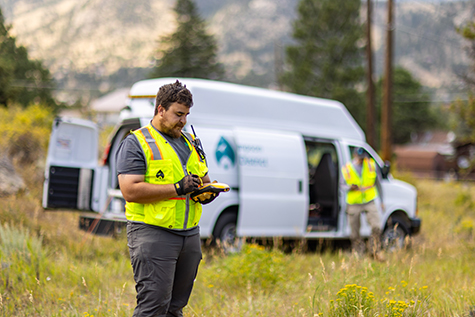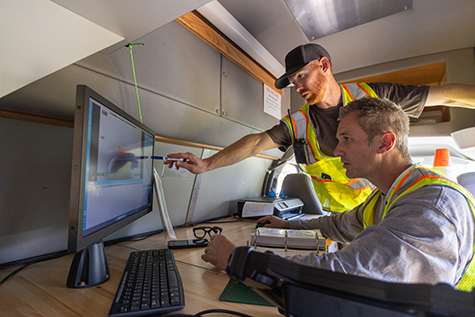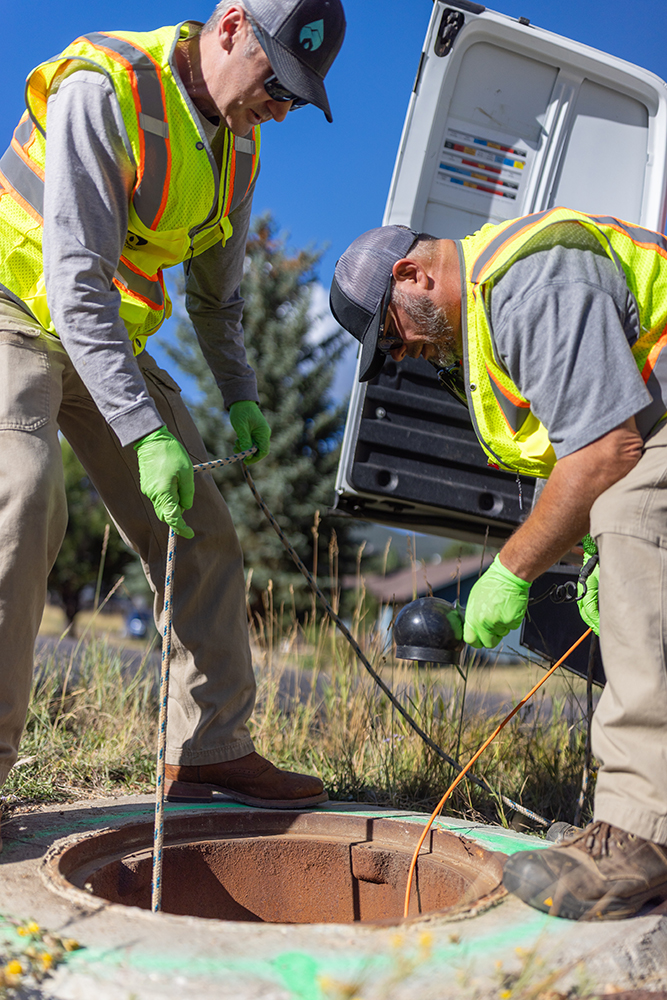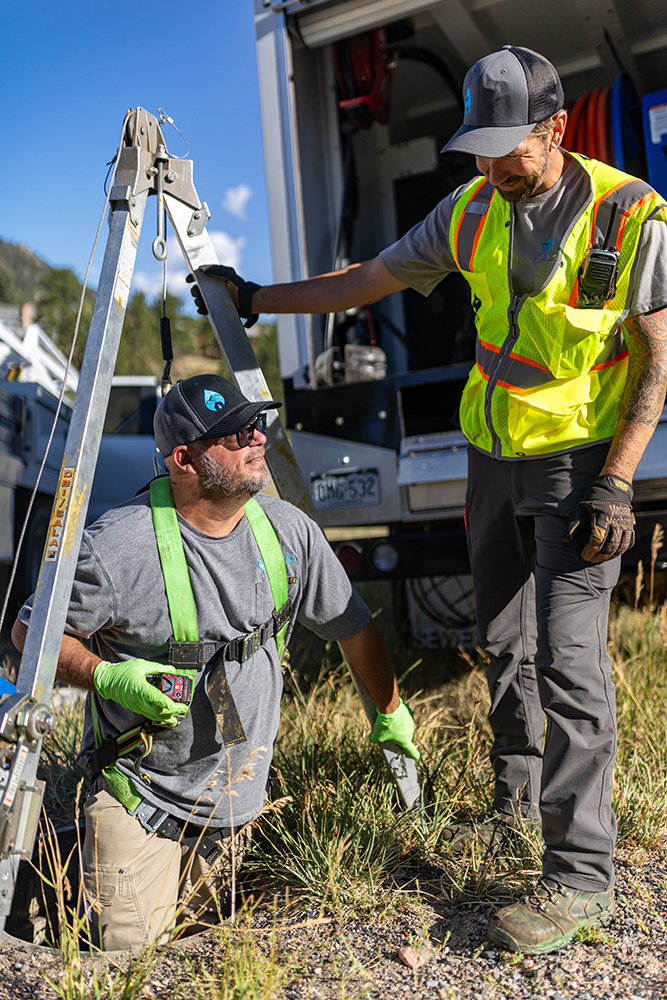Collection
Our Collection Department is responsible for maintaining a system of nearly approximately 93 miles of sewer lines and thousands of manholes throughout the Estes Valley. Our goal is to provide residents with the highest level of service and system reliability through regular maintenance, best practices and advanced technology.
Sewer Main Cleaning and Inspection
Specialized equipment, including a high-velocity jet truck and a CCTV inspection vehicle, allows the team to inspect the system and prevent sanitary sewer backups. Each year, the District aims to jet and inspect at least 10% of the collection system to prevent backups, identify problem areas and prioritize repairs.
The District also operates the Fats, Oils and Grease (FOG) program to prevent blockages and protect downstream systems. Grease-producing establishments are required to install and maintain interceptors that prevent grease from entering and harming the wastewater treatment system, which are routinely inspected by staff.
System Rehabilitation and Replacement
Aging infrastructure requires constant attention to address damage from root intrusion, ground movement and water infiltration. We utilize data gathered from our inspection program to develop and prioritize potential projects. These efforts combine traditional construction with evolving trenchless technologies to minimize disruption and maximize efficiency when system repairs are needed.
Accurate data collection also plays a key role in asset management and future planning. Using GPS technology and mapping software, the District tracks infrastructure conditions and shares data with partner agencies.





